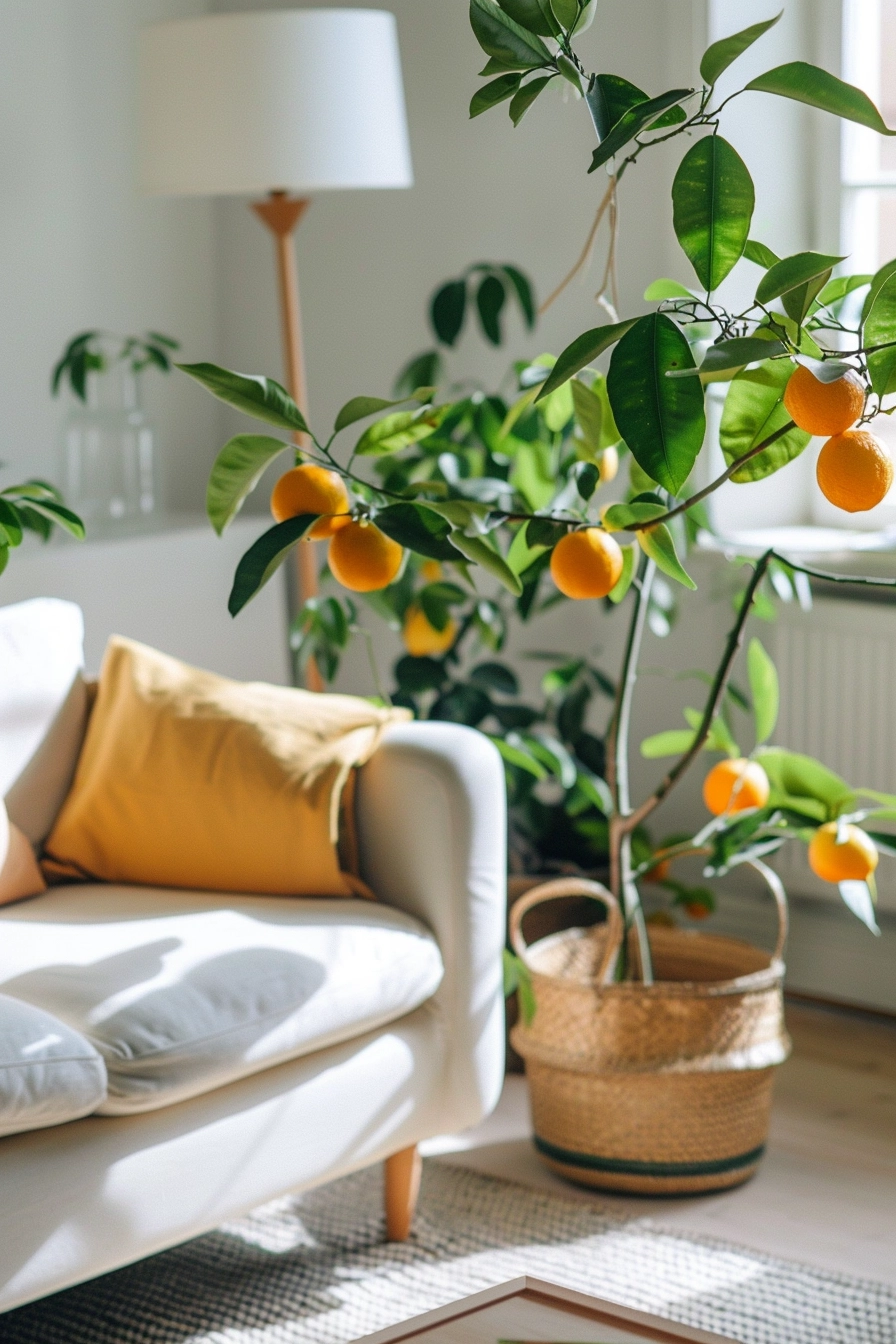Growing citrus indoors can be a rewarding challenge. While many houseplants are adaptable to indoor environments, there are key elements to consider when growing citrus trees inside. These include selecting the right variety, providing adequate light and temperature, maintaining proper humidity levels, choosing the right soil, and ensuring proper watering and fertilization. By following these tips and best practices, you can overcome the challenges of growing citrus indoors and maximize your fruit production.
Key Takeaways:
- Select the right citrus variety for indoor cultivation
- Provide adequate light and maintain optimal temperature
- Maintain proper humidity, use well-draining soil, and water correctly
- Regularly check soil moisture to prevent under or overwatering
- Follow best practices to maximize indoor citrus fruit production
Selecting the Right Citrus Variety
When growing citrus indoors, it’s important to choose the right variety. Not all citrus trees are suitable for indoor cultivation. Varieties like Thai Lime, Fukushu Kumquat, Calamondin, and Meyer Lemon are excellent choices for indoor growing. These trees set smaller fruit that won’t pull too much energy from the plant.
- Thai Lime: Known for its fragrant leaves and small, juicy fruits, Thai Lime is a popular choice for indoor citrus growing. It thrives in containers and is relatively easy to care for.
- Fukushu Kumquat: Fukushu Kumquat is a compact citrus tree that produces bite-sized fruits with sweet-tart flavor. It can tolerate lower light conditions and is ideal for smaller indoor spaces.
- Calamondin: Calamondin is a hybrid citrus tree that produces tangy fruits similar to limes. It is highly adaptable to indoor environments and adds a decorative touch with its small, ornamental fruit.
- Meyer Lemon: Meyer Lemon is a popular choice among indoor citrus growers due to its sweet, juicy fruits and compact size. It is a prolific producer and thrives in containers.
It is also recommended to remove flower buds in the first season or two to allow the trees to establish themselves. This helps redirect energy towards root development and overall growth. If you’re looking for a variegated citrus variety to add visual interest to your indoor garden, options like Centennial Variegated, Variegated Calamondin / Calamansi, and Variegated Eureka Pink lemon are available.
The right variety is the first step in successfully growing citrus indoors. Choose a variety that suits your preferences and indoor environment to ensure a fruitful and rewarding indoor citrus growing experience.
Providing Adequate Light and Temperature
When it comes to growing healthy indoor citrus trees, providing adequate light and maintaining optimal temperatures are crucial. Here are some troubleshooting tips and successful cultivation techniques to ensure your citrus plants thrive:
1. Sunlight Requirements
Indoor citrus trees need 8-12 hours of sunlight daily to grow and produce fruit. Place your citrus tree near a south-facing window with unobstructed light to maximize sun exposure. The natural sunlight provides essential nutrients and energy for healthy growth.
2. Supplement with Grow Lights
In winter, when sunlight may be limited, supplementing with full spectrum grow lights is necessary. Choose T5 fluorescent bulbs with a color temperature of 6500k or full-spectrum LED bulbs. These artificial lights mimic natural sunlight and provide the necessary light spectrum for photosynthesis.
3. Preventing Light Burn
While grow lights are beneficial, keeping them at the proper distance from the trees is essential to avoid light burn. Follow the manufacturer’s recommendations for distance, typically around 12-18 inches above the canopy. Adjust the height as your citrus tree grows to prevent any harm from excessive heat or light intensity.
4. Optimal Temperature Range
Maintaining the right temperature range is crucial for indoor citrus growth. Ideally, keep the room temperature between 55°F-85°F. Avoid exposing your citrus tree to temperatures below 32°F, as this can cause damage to the leaves, flowers, and fruit development.
5. Consistent Temperature Levels
Citrus trees thrive when exposed to consistent temperature levels. Avoid drastic temperature fluctuations by keeping your indoor environment stable. Avoid placing your citrus tree near drafty areas or heat sources like vents or radiators.
By providing your indoor citrus trees with adequate light and maintaining optimal temperatures, you’ll create a favorable growing environment for them to flourish. Troubleshoot any growth issues and ensure successful cultivation by following these tips.

Maintaining Humidity, Soil, and Watering
Indoor citrus trees face their fair share of challenges, but with the right care, you can overcome these obstacles and enjoy a thriving citrus garden right in your own home. One important aspect to consider is maintaining proper humidity levels. Elevating your citrus tree’s pot on rocks or pebbles in a saucer can help create a humid microclimate around the plant. Additionally, misting the foliage during dry winter months and introducing fans for better airflow can mimic the natural humidity found outdoors, promoting healthy growth.
Aside from humidity, choosing the right soil is crucial for your indoor citrus plants. Opt for a well-draining citrus/cactus soil mix and incorporate compost and perlite to enhance drainage and aeration. Avoid using native soil from your yard or gravel at the base of the pot, as these can hinder proper growth and lead to root rot. By providing the right soil conditions, you’ll give your citrus trees a solid foundation for success indoors.
Watering is another essential aspect of nurturing indoor citrus plants. During the summer months, regular watering is necessary, with deep watering once a week. However, it’s important to check the soil moisture level regularly to prevent both underwatering and overwatering, as both can be detrimental to the plant’s overall health. By finding the balance and keeping a close eye on moisture levels, you can help your citrus trees thrive and overcome common watering challenges.

